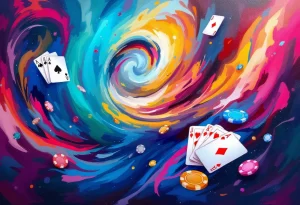Okay, so let’s talk about something that’s been completely transforming the art world, especially for graphic artists: digital platforms. Back in my day, it was all about lugging around portfolios the size of small cars, hitting up galleries, and hoping someone important noticed you. Now? You can build an audience and sell your work from your couch. Honestly, it’s wild.
The Democratization of the Art World
These platforms, they’re not just fancy websites; they’re like virtual studios, galleries, and marketplaces rolled into one. They’ve leveled the playing field, giving artists who might not have access to traditional art world gatekeepers a chance to shine. I remember one of my students, Maya, she was doing amazing digital collages, but she felt completely invisible. Then she started posting on one of these platforms, and boom – suddenly, she’s getting commissions left and right! It’s incredibly empowering. It’s not about who you know anymore; it’s about what you create. And that’s how it should be, right?
Key Players in the Digital Art Game
So, who are the big names in this digital art revolution? Well, there are a few that really stand out. First, you’ve got sites like ArtStation and DeviantArt, which are like online communities for artists. They’re great for getting feedback, building a following, and just connecting with other creatives. Its like a never ending digital art school, you know? Then there are platforms like Behance and Dribbble, which are more focused on showcasing professional work and getting hired. These are the places where art directors and clients go to find talent. And of course, you can’t forget marketplaces like Etsy and Society6, where you can sell prints, merchandise, and even original digital artwork directly to buyers. I’ve even seen some artist friends sell NFTs, but that’s a whole other can of worms, isn’t it?
Building Your Brand Online
Now, just having a profile on these platforms isn’t enough. You’ve got to treat it like your own personal art gallery, and really cultivate your online presence. That means posting regularly, engaging with your followers, and using social media to promote your work. Think of it like this: you’re not just an artist, you’re a brand. You’ve got to tell your story, show your process, and build a connection with your audience. It’s more work than just creating the art, but it’s essential for success in the digital age. Honestly, I’ve seen artists with mediocre work do better than truly talented ones just because they have a better understanding of marketing themselves online.
The Future of Digital Art Platforms
Where are these platforms headed? I think we’re going to see even more integration with things like augmented reality and virtual reality, allowing people to experience art in completely new ways. Imagine being able to walk through a virtual gallery filled with digital paintings, or seeing a mural come to life on your phone screen. The possibilities are endless! And with the rise of AI art tools, these platforms will likely become even more powerful and accessible, allowing artists to create things we can’t even imagine today. It’s a bit scary, sure, but also incredibly exciting. I can’t wait to see what the next generation of artists will create with these tools. The world is changing, art is changing. And I’m here for it.








